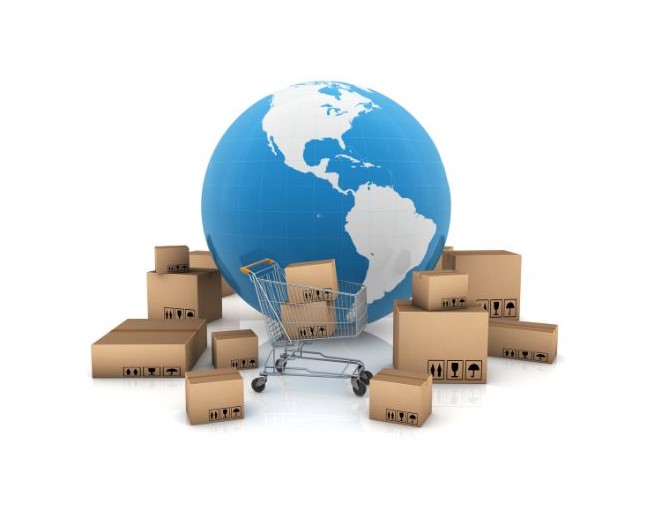

Expanding Beyond Borders: International Sourcing and Sales
Introduction
Expanding beyond domestic markets and tapping into international opportunities can significantly elevate the success of third-party platform sellers. However, venturing into international sourcing and sales requires a strategic approach to navigate the complexities of different markets, regulations, and consumer behaviors. In this comprehensive guide, we’ll explore insights and tips for third-party platform sellers looking to expand beyond borders and capitalize on the vast potential of global e-commerce.
The Potential of International Sourcing and Sales
Why should third-party platform sellers consider international expansion? Here are key reasons:
- Market Diversification: Accessing international markets diversifies your customer base, reducing reliance on a single market.
- Increased Revenue Potential: Expanding to new regions opens up opportunities for increased sales and revenue.
- Product Niche Suitability: Certain products may find a more receptive audience or demand in specific international markets.
- Seasonal Offsetting: If your products have seasonal demand, international markets with opposite seasons can help offset fluctuations.
- Competitive Advantage: Venturing into international markets can give you a competitive edge over sellers focused solely on domestic markets.
GET EXCLUSIVE ACCESS TO OUR EXPERTS THIRD PARTY PLATFORM SELLERS' TIPS AND ADVICE:
- Get AHEAD of the Competition.
- FREE Membership to Sarah’s Weekly Insiders secrets.
- FREE tailored resources and gifts.
- PLUS qualify to receive personal email support.

* We respect your privacy. We will not spam you.
Strategies for Successful International Sourcing and Sales
Let’s delve into actionable strategies for third-party platform sellers looking to expand internationally:
1. Conduct Market Research:
– Analyze potential markets to understand demand, competition, and cultural preferences.
– Identify target demographics and consumer behavior in each market.
2. Choose the Right Products:
– Select products with international appeal and consider cultural nuances.
– Assess the feasibility of shipping and handling regulations for each product.
3. Understand Import Regulations:
– Familiarize yourself with import regulations, tariffs, and customs procedures.
– Ensure compliance with local laws and product standards.
4. Partner with Reliable Suppliers:
– Establish relationships with reliable international suppliers.
– Conduct due diligence on suppliers’ reputation, production capabilities, and adherence to quality standards.
5. Adapt Your Marketing Strategy:
– Tailor your marketing messages to resonate with different cultural and linguistic nuances.
– Utilize localized advertising and social media campaigns.
6. Optimize Shipping and Logistics:
– Streamline international shipping processes.
– Consider working with logistics partners experienced in cross-border e-commerce.
7. Offer Multilingual Customer Support:
– Provide multilingual customer support to address queries and concerns effectively.
– Ensure seamless communication with customers in their preferred languages.
8. Price Strategically:
– Consider currency exchange rates and local pricing norms.
– Implement pricing strategies that remain competitive in the target market.
9. Leverage Cross-Border E-commerce Platforms:
– Utilize platforms that facilitate cross-border sales.
– Understand the platform’s policies and features for international sellers.
10. Focus on User Experience:
– Optimize your online store for a seamless user experience.
– Ensure your website is mobile-friendly, as mobile usage patterns vary globally.
11. Build Trust with Local Certifications:
– Obtain certifications relevant to the target market to build trust with local consumers.
– Highlight any international quality standards your products adhere to.
12. Monitor Currency Fluctuations:
– Stay informed about currency fluctuations that may impact your pricing.
– Consider currency hedging strategies to manage financial risks.
13. Offer Multiple Payment Options:
– Provide diverse payment options suitable for each market.
– Consider local preferences and widely used payment methods.
14. Customize Product Listings:
– Customize product listings for each market.
– Translate product information and optimize for local search engines.
15. Localize Customer Communications:
– Personalize customer communications with a localized approach.
– Address customer concerns promptly and professionally.
16. Test the Market with Limited Products:
– Test the waters by initially offering a limited range of products.
– Assess performance and adjust your strategy based on market response.
17. Stay Informed About Regulatory Changes:
– Stay updated on regulatory changes and market trends.
– Be agile in adapting your strategy to evolving market conditions.
18. Establish International Returns Policy:
– Clearly communicate your international returns policy.
– Provide clear instructions for returning products from different regions.
19. Network with Local Influencers:
– Collaborate with local influencers to enhance brand visibility.
– Leverage influencer marketing to build trust with the target audience.
20. Monitor and Analyze Performance Metrics:
– Regularly monitor key performance metrics, such as conversion rates and customer feedback.
– Use data analytics to make informed decisions and refine your strategy.
Conclusion: Navigate Global E-commerce Successfully
International expansion presents significant growth opportunities for third-party platform sellers willing to navigate the complexities of global e-commerce. By implementing these strategies and staying attuned to the unique demands of each market, you can position your business for success beyond borders. Remember that international expansion is a dynamic journey that requires adaptability, cultural sensitivity, and a commitment to continuous improvement. As you navigate global e-commerce, you’ll not only broaden your market reach but also enhance the resilience and sustainability of your third-party platform selling business.
MORE LIKE THIS...
Bringing you the latest information, ideas, products and services for your E-commerce business.
Copyright 2024 E-Market Pulse
Contact Us
We may receive compensation from partners listed through affiliate partnerships, at no cost to you. This doesn’t influence our ratings, and the opinions are our own
Subscribe to our Newsletter
Get updates on products and services specially targeted to help you succeed.
